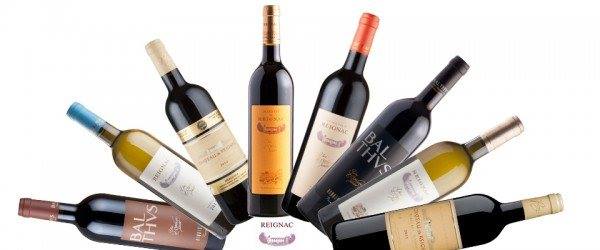
In a region with over 7,000 chateaux, it’s hard to find an estate offering a truly unique selling proposition. Quality is the attribute most Bordeaux producers hang their hat on. But how are you going to convince audiences of your quality when all 7,000 of your competitors are making the same claim? You start by committing to a long-term strategy…

It was Château de Reignac’s placing as a top 10 estate in the MyBalthazar ‘digital Bordeaux’ research that led me to this renegade estate last summer. I loved the esprit-de-corps; the unbridled energy. The Reignac team was not traditional Bordeaux. They knew early on they’d have to break a few rules to survive – and thrive – in the competitive landscape of Bordeaux. They faced many perceptual and geographical challenges, all of which are outlined in part one. Did you read it?
Turning a Problem into a Solution
Château de Reignac may be located in lesser-known Entre-Deux-Mers but the actual AOC designation for their much-heralded Grand Vin and two reds is Bordeaux Supérieur (77 hectares). Although both red and white wine is produced in Entre-Deux-Mers, only white carries the AOC “Entre-Deux-Mers”. Red producers here have the option to sell their wine under the Bordeaux or Bordeaux Supérieur appellation.
Wines with a Bordeaux Supérieur label have stricter yields and higher alcohol levels than generic Bordeaux, one of the ways Bordeaux winemakers distinguish themselves from the “classified” competition. Vines for the flagship Grand Vin de Reignac – a blend of Merlot, Cabernet Sauvignon and Cab Franc – and their other marquee cuvee – Balthus – are on average 40 years of age. Like many of the famous wines in the neighbouring Right Bank, Balthus – is made entirely from Merlot – and both wines are fermented in new French oak barrels. The second wine, the Château de Reignac, is also Merlot-dominant. Château de Reignac makes a Grand Vin Blanc wine (produced under the general Bordeaux Blanc appellation) from a blend of Sauvignon Blanc, Semillon and occasionally Sauvignon Gris.

While the 130 hectare estate may be off the beaten tourist path, the terroir combines the best of the Médoc left bank (clay-gravel soils from 600,000-year-old alluvial deposits) and Saint Emilion/Pomerol right bank (clay-chalk and soils that combine hard Castillon limestone and softer marlstone). Most of the Château de Reignac vineyards sit in the north-western part of Entre-Deux-Mers. Grapes for the white wine originate from a 2-hectare (5 acre) plot of gravel and clay soils.
Château de Reignac’s Growth Strategy
Chateau Upgrades

Yves Vatelot’s entrepreneurial spirit and innovative bent started with many significant estate upgrades. In 1998, the exquisite 17th Century chateau built by Lord Baude-de-Peyron, was completely renovated and the grounds beautifully landscaped. The charming 16th century pigeon tower or dovecote (yes, during the 16th and 17th centuries, the richest people across the United Kingdom and France built beautiful towers just for pigeons) was converted into a tasting room with the centerpiece, a Yves-Vatelot designed wine elevator. A pulley system lowering the wines from the upper floor to a circular marble table, was added providing a grand entrance to the blind-wine unveiling, and a certain je ne sais quoi to the tasting experience.

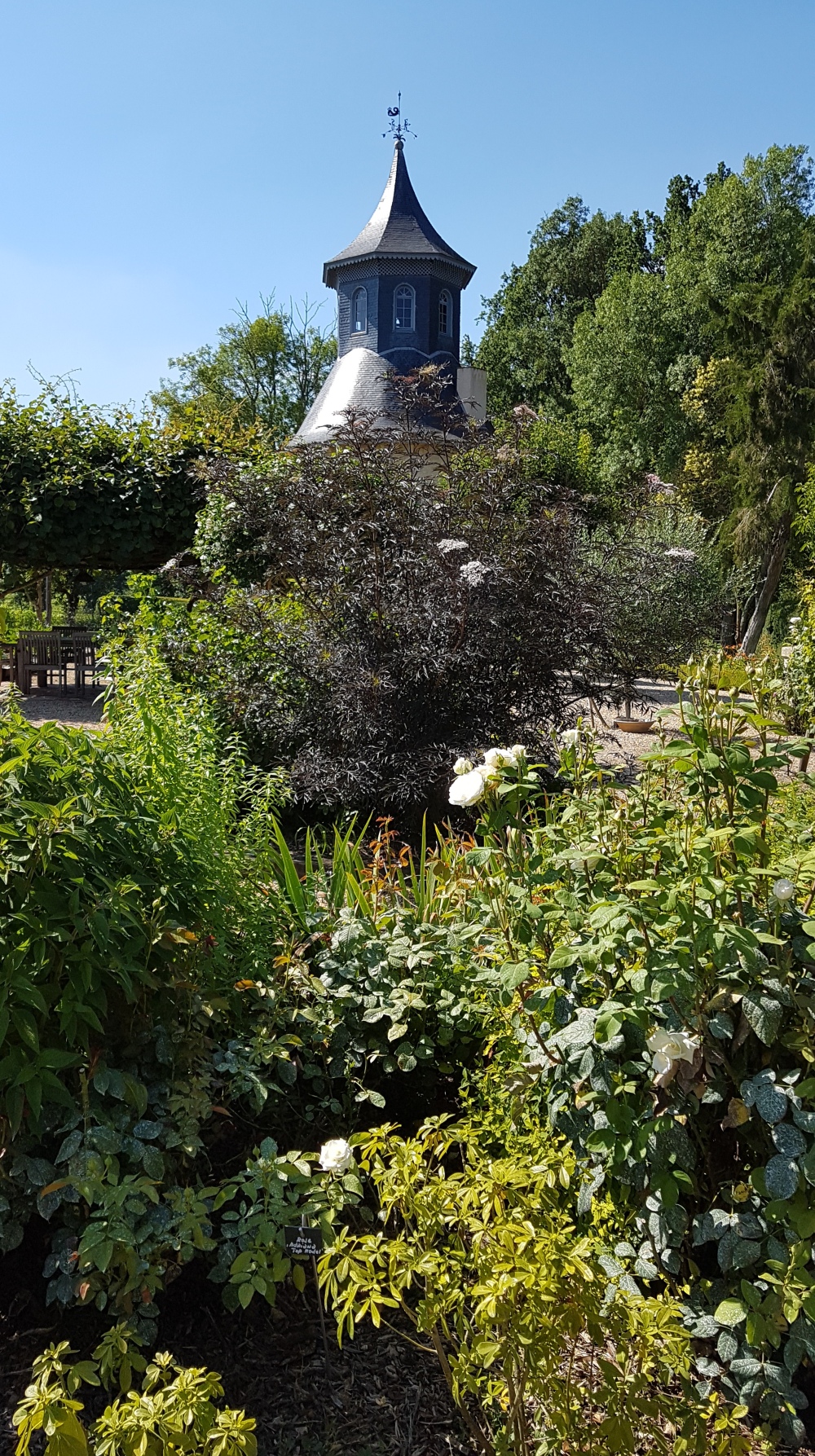
At the heart of the estate, is a beautiful greenhouse, originally built by Gustave Eiffel – he of the Eiffel Tower in Paris. The four-season greenhouse was the inspiration for a magnificent summer Scent Garden, which was added to the property in 2010. Visitors can enjoy an olfactory tour and walk around the greenhouse and outside gardens, readying their nose for the wine tasting. Over 200 plants, flowers and aromatic herbs are planted here, representing the range of aromas found in red and white wine. Rose bushes, lemon trees, anise, lavender, rosemary…..all the fragrant notes of wine wafted our way as we walked the sensory garden on a beautiful, sunny day last summer. Château de Reignac also provides picnic baskets for lunch under the trees of the estate, as part of a vineyard tour.
Viticulture and Wine Cellar Upgrades
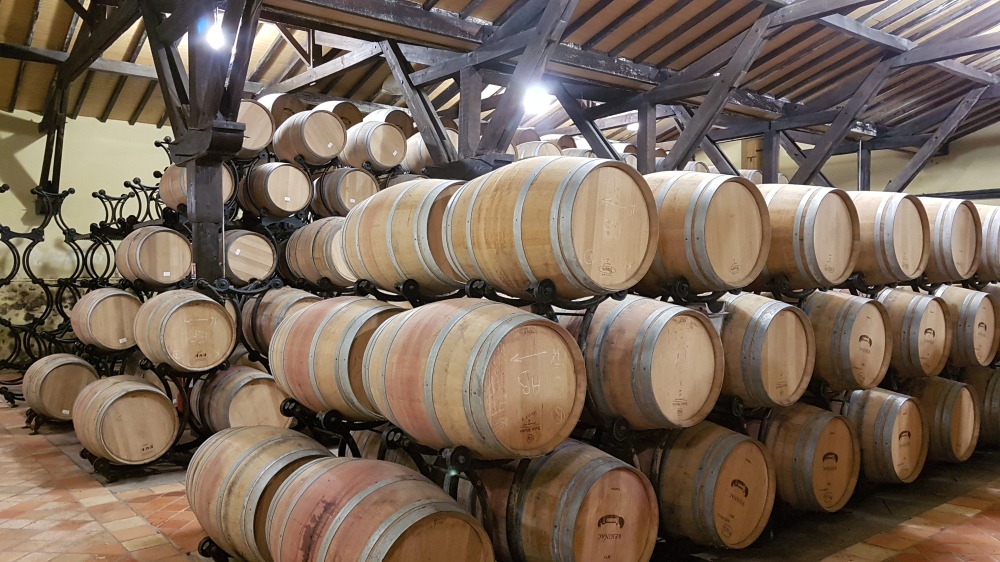
Respect for the environment is at the heart of grape growing and wine production at Château de Reignac with an end goal of sustainable viticulture. The 150-hectare (371 acre) property is covered with forest, an important feature that adds to the estate’s biodiversity. A 3,500 square metre bamboo plantation has also been added to help absorb winery waste and local farmers are invited to have their sheep graze in the winter.
The most amazing upgrade was the 1993 creation of a lake. Not just a pond, but a big-enough-to-land-a-seaplane lake. Taking to heart the adage ‘the best estates can see water’, the lake adds picturesque value. More importantly, however, it provides temperature regulation and a moderating influence for the vineyards to help ward off frosts (sadly, it wasn’t enough for the early Bordeaux frosts of 2017).
The cellars, feature a combination of tradition and modern techniques, including a Yves Vatelot, patent-pending barrel design. Led by Nicolas Lesaint, the technical director or “conductor” as he is called here, the winemaking team has done everything possible to shine a light on the spectacular terroir, a key factor in Reignac’s celebrated wines.
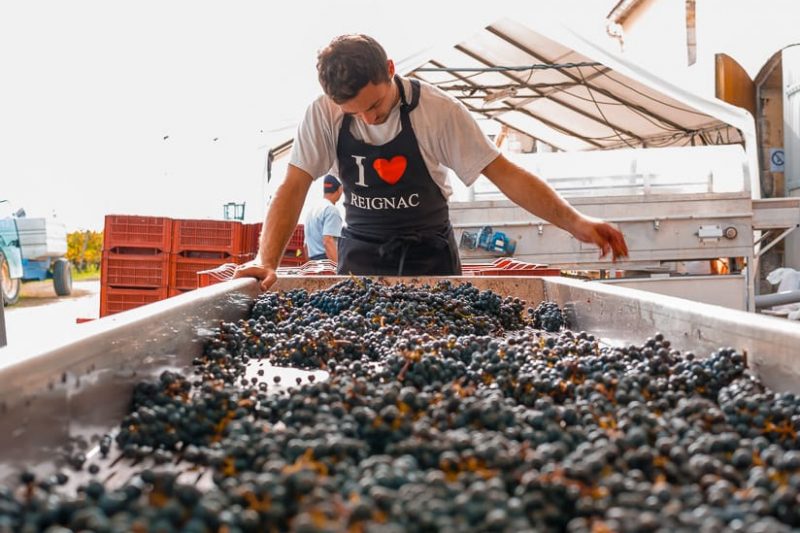
Wine Marketing Chutzpah…
While the wine is exceptionally good and recognized as among the best in the Bordeaux Supérieur category, it’s the pioneering use of social media channels and tourism marketing where Château de Reignac really shines.
“And that is due to the challenge we face,” explained Marion Bechu, Sales and Marketing Director, when I visited the property in the summer. “Our wines are amongst the best in Bordeaux but we are not a classified estate and we’re in a region – Entre-Deux-Mers – that few tourists have heard of. So we don’t have the same level of awareness. That means we have to be creative and sometimes take risks.”
In 2009, when the vines, the winemaking team, and the property upgrades were in place, the Vatelot’s were ready to share their wines with the world. They placed their 2001 Grand Vin de Reignac in a European Grand Jury blind tasting competition with some of the most famous properties of Bordeaux. I suggest you find the time to watch this video, which you’ll find in every language imaginable on Reignac’s YouTube channel. What this first tasting did (there are several competitions with similar results) is not so different from the 1976 Judgment of Paris when California wines outscored the wines of France. The respected French wine critics placed Château de Reignac in the number two position ahead of the finest wines of Bordeaux. Only Saint Emilion’s Chateau Angelus performed better.

The true shock value came at the end of the video with a graphic showing the price of Château de Reignac wine (the Incredible Tasting of the Famous Bordeaux). Reignac cost €14.90 while the other celebrated properties cost €€€. Of course, this competitive tasting of Bordeaux wines didn’t garner the headlines or reportage of the Judgement of Paris. Critics chalked it up to a ready-to-drink vintage, arguing it was at its best after only 8 years, and as a Bordeaux Supérieur wine, didn’t have the structural backbone to compete with the great, classified growths. What it did, however, was provide proud validation for the quality of the wine at Château de Reignac in the nether-region of Entre-Deux-Mers. As importantly, it confirmed Château de Reignac as the most digitally savvy ‘player’ in Bordeaux.

Two years later, on Dec 13, 2011, owner Yves Vatelot tapped the European Grand Jury again. Vatelot bought 2003 – 08 vintages of Chateau Lafite, Petrus and Cheval Blanc – essentially, 24 bottles of some of the most expensive wine on the planet. His Merlot cuvée – Balthus – was the fourth wine in the competition. Vatelot paid to have the entire competition recorded. He wanted the panel to evaluate his wine against some of the best. Even if his wines didn’t fare well, he was still in esteemed company. The Reignac team knew this would provide a valuable halo effect for the brand. The results? The 2007 Balthus – €55 placed third behind the 04 Lafite – €950 and 05 Petrus – €4,500, and the 06 Balthus placed seventh. Not bad for an “unknown cru”.
Another video in Hong Kong with 42 tasters also generated top marks for Reignac. Again, these videos can be found on the Reignac website, and the results are referenced extensively on Vivino and in digital comment streams everywhere!
The We Try Harder Miscalculation
Did you upset the Bordeaux establishment when you posted these videos on YouTube, I ask Sales and Marketing Director, Marion Bechu? “Well, yes, maybe a little,” she says. “But they all knew it was a blind tasting competition. They just didn’t expect to lose.” If the exceptional quality of the wine wasn’t enough of a story, the final scores and price graphics in all the videos, hit the famous chateaux of Bordeaux hard…. especially as Château de Reignac ensured the iconic graphic from the 2009 tasting was featured widely across YouTube.
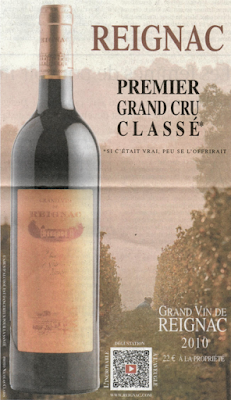
What Marion Bechu didn’t share when I visited, was the 2014 Le Figaro ad comparing Reignac to the great Grand Cru Classé wines of Bordeaux. This was the straw that broke the camels’ (aka the classified growth’s) back. Château de Reignac had simply gone too far with their brazen claims! The Council of Grands Crus Classés in 1855, the Council of Wines of Saint-Emilion and Union des Crus Graves Classified charged Yves Vatelot with deceptive marketing practices and illegal comparative advertising. The court case resulted in initial fines of €30,000 against Château de Reignac plus €8,000 and a prison sentence against Yves Vatelot (all later suspended). Chateau Reignac appealed, but on Sept 18, 2018 the courts ruled against Vatelot and Reignac. To claim to be the equal of the Bordeaux Grands Crus is not legal. All organizations were allowed to publish the judgement on their websites.
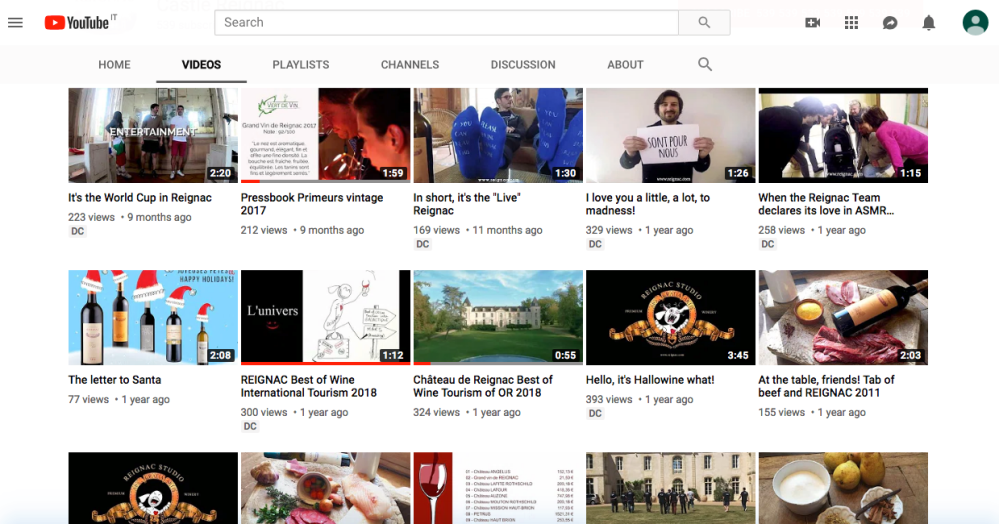
Social Savvy
It was the traction Château de Reignac garnered on YouTube to those videos – the views, comments, shares – that helped convert the Reignac team to the ubiquitous power of social media. Today, they’re using all the tools in the digital toolbox to deliver a range of customer experiences.
“Our philosophy and social media strategy here at Château de Reignac is to welcome wine lovers, fans of our wine and potential guests into the conversation. We want them to get to know us, the wine, the beautiful property and to really understand the process of making wine,” says Marion.
“We use Instagram, Instagram contests, Facebook, Twitter, Trip Advisor and on Wednesday, we do a Facebook Live,” she adds. “It’s fabulous – we have a super-engaged audience, we don’t have to pay to shoot and edit video and we’re getting a lot of views.” According to Bechu, Reignac’s average Facebook Live audience size is around 2,500. She says all of their employees are encouraged to shoot video and be part of the process. “We really are a family here and we take that approach in all our customer outreach. You’ll see lots of videos with Mona Roson – our winemaker and with Nicolas our technical director. We even have content with our cooperage partners.” Marion says everyone at Reignac is encouraged to generate ideas and shoot content. “For young digital natives on our team, technology comes naturally to them, and it gives us an importance presence in this new digital landscape.”
The other great social platform for wine lovers, Vivino, is largely an echo-chamber, with many Reignac “ambassadors” singing the praises of the wine and citing the blind tasting videos on YouTube. The value pricing – relative to the classified growths make those in the know about the quality of the wines, part of a select club.
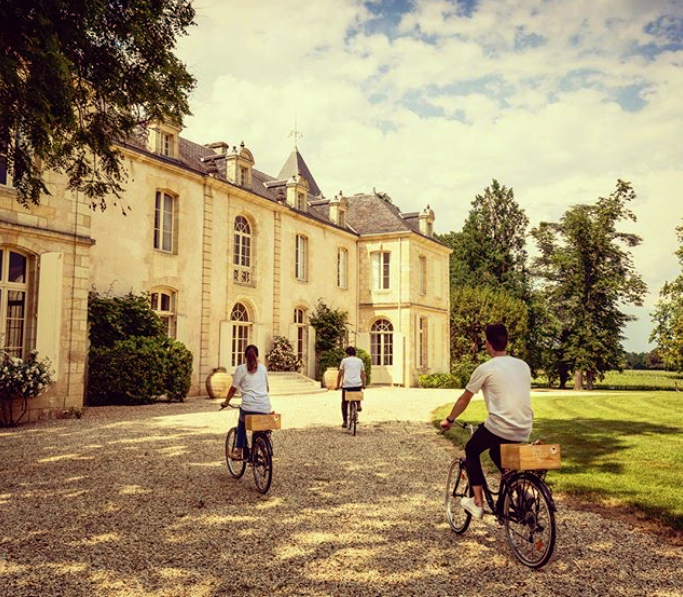
Wine Tourism Savvy
Someone much smarter than me once said it’s the victory of the meritocracy over the aristocracy. With an ever-expanding international wine community, it’s important to offer #winelovers meaningful interactive experiences. Increasingly, Château de Reignac is luring Left Bank and Right Bank tourists to the Entre-Deux-Mers centre.
The beauty of the Château Reignac property and their innovative wine experiences has resulted in a series of Best of Wine Tourism international awards – 2015, 2016 (Gold) and 2018 (Gold). The competition rewards the most outstanding properties in wine tourism through the “Great Wine Capital Global Network” which features Old World and New World estates.
Château de Reignac also received the Certificate of Excellence from Trip Advisor in 2015, 2016 and 2017 for their bike tours through the vineyards and family friendly cellar tours (available in French, English, Spanish, German and Bulgarian). To understand the concept of meritocracy, and specifically digital meritocracy, one only needs to look at the comment streams on Trip Advisor. Visitors to the estate gush and 5 star reviews abound! Château de Reignac has successfully turned their customers into brand champions and the universally positive experiences at the estate are further proof that the we try harder strategy is paying dividends.

While Château de Reignac is paying the price for its overly ambitious marketing practices – there’s no question the estate is better positioned for long-term growth than many of the chateaux in Bordeaux. They are not a luxury brand. The geography has more or less determined that fate. But they are approachable, fun and scrappy. And, according to Robert Parker – when he was writing reviews – they consistently over-deliver on wine quality relative to their position in the market.
Château de Reignac has been trying harder for decades. They know without risk, there’s no reward. They may have had their marketing wings clipped, but I don’t expect them to retreat any time soon. Certainly, there’s no evidence they’re rethinking their marketing approach to the business.
I suggest you decide for yourself and add them to your itinerary on your next trip to Bordeaux.
Note: I did enjoy a wonderful tasting at Château de Reignac and sadly left my tasting notes in the pocket of the Air Canada seat cover. So here’s a few choice descriptions of Château de Reignac’s 2017 wines from the critics. It’s a tad unorthodox but hey, it’s Château de Reignac.

I LOVE your closing note! And the rest of it. So when are you starting work there? They must adore you. Co Lynne
Get Outlook for Android
________________________________
LikeLike